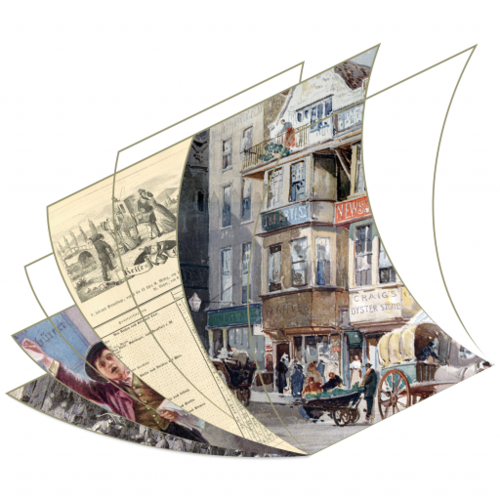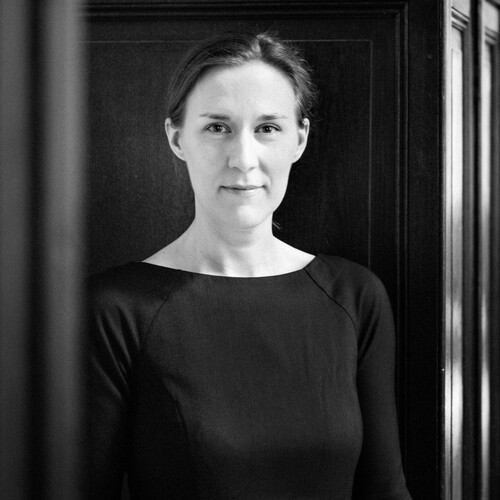Chair
Artemis Alexiou
Feminist Periodicals in Space And Time: The Perpetual Transformation of the Women’s Penny Paper (Oct 1888-Dec 1890), Woman’s Herald (Jan 1891- Dec 1893) and Woman’s Signal (Feb 1894-Mar 1899).
Abstract
Inquiries on late nineteenth century feminist periodicals typically attend to the textual, and/or the pictorial elements of the titles under investigation. Subsequently, most studies of this genre often consider the text/s and image/s published in them, but not the design elements incorporated. Concurrently, the few studies that examine feminist periodicals as design objects, focus on the twentieth century and later, usually offering comments on the design of these publications without consideration of their editorial identity and/or their distinctive position in space and time. In contrast, this paper offers a design historical analysis of paratextual strategies found in the feminist press during the 1890s, specifically through a spatiotemporal lens. More specifically, it examines the mastheads of three consecutive sister feminist titles: Women’s Penny Paper (Oct 1888-Dec 1890), Woman’s Herald (Jan 1891- Dec 1893) and Woman’s Signal (Feb 1894-Sep 1895). The paper argues that the editorial identity of each title was often translated through the various paratexts implemented in the mastheads, revealing that throughout the many years of serial weekly publication, the mastheads transformed numerous times. These design changes were directly related to the target audience each editorial team aimed to attract, even if this intention was not specifically noted by the editors. This is a journey of perpetual transformation, offering an intimate look into the delicate relationship of design and serial form as it existed within three of the most successful feminist periodicals of the 1890s, emphasizing the importance of space and time for periodical studies research.
This video was removed in compliance with the author’s preferences.

Artemis Alexiou
Dr Artemis Alexiou is a senior lecturer in design history at York St John University, UK, specialising in women’s history.
Wednesday, 16th June 2021 at 15.15 CEST (UTC+2)
Eloïse Forestier
Periodicals as Vectors of Cultural Transfer: The French and British Roots of Swedish Feminism in late 19C Swedish Periodicals
Abstract
Swedish feminism is considered unique in Europe and often presented as a model for other democracies. Yet in the middle of the nineteenth century, Swedish women were denied access to most professions and had no place in the public sphere, at a time when France and Britain pioneered early feminist thought. Swedish periodical scholarship has to a certain extent acknowledged the transnational roots of Swedish feminism but has left some blind spots concerning the ongoing role of the periodical as a vector of transnational cultural transfer. This contribution aims to introduce and discuss my current project, that traces the French and British origins of Swedish feminism over several decades of the early Swedish feminist press.

Eloïse Forestier
Eloise Forestier holds a doctorate in Literary Studies from Ghent University.
Wednesday, 16th June 2021 at 15.15 CEST (UTC+2)
Marianne Van Remoortel
Periodical Poetry and Emancipatory Thinking in Late-Nineteenth-Century Europe: The Case of the Belgian-Dutch Feminist-Socialist De Vrouw (1893–1900)
Abstract
Poetry has long been a staple genre of the periodical press. From the emergence of the periodical in the early eighteenth century, poems have always had a place in its pages alongside prose fiction, essays, and other text types. Yet in both the study of poetry and periodical studies this presence is usually taken for granted. In the words of Victorian periodical scholar Linda K. Hughes, periodical poetry tends to be seen as a »›filler‹ worth no one’s time.« Since Hughes’s 2007 call for a revaluation of the relationship between poetry and periodicals, a number of projects have started compiling bibliographic databases of periodical poetry, while a growing body of scholarship has begun to address why and how poetry »matters« to periodical studies, and vice versa. So far, this work has been carried out within a specific set of boundaries: the focus has been on a single language (English) and a single national context (usually Britain).
In this paper, I build on this earlier scholarship by considering poetry published in the feminist periodical press. I will focus on the Belgian-Dutch feminist-socialist periodical De Vrouw: Socialistisch Maandblad (Woman: A Socialist Monthly) (1893–1900), published by the Dutch-Flemish Women’s Union and co-edited by Nellie van Kol (1851–1930) and Emilie Claeys (1855–1943). De Vrouw regularly and prominently featured poetry. Poems included original contributions by Dutch poets as well as translations from foreign-language poets (e.g. German, French, English, Swedish, Latin), living and canonical deceased (e.g. Goethe, Victor Hugo, Shelley), male and female. Tracing these poems back to their origins and reading them alongside the periodical’s feminist-socialist prose materials, I will argue that together these different types of poems acted as a ›conductor‹ for the flow of emancipatory ideas, particularly about freedom and equality, across temporal and spatial boundaries in late-nineteenth-century Europe.
This video was removed in compliance with the author’s preferences.

Marianne Van Remoortel
Marianne Van Remoortel is Associate Professor of English Literature at Ghent University, Belgium.
Wednesday, 16th June 2021 at 15.15 CEST (UTC+2)
Discussion
You are invited to discuss the papers in this section in advance of the live Q&A Session using the comment function below. Please make sure to indicate which paper you wish to comment on.


Thank you, Marianne, for this insightful analysis of how De Vrouw used poetry as an integral part of its editorial strategy. I have one question and one suggestion. The question is: to what extent have you found evidence that poetry was also used to cohere the community around the periodical, beyond the “Welcome” poems by the two male socialists? I am thinking for instance of poems dedicated to other contributors or members of the network around the periodical, or poems of adherence by readers.
And the suggestion: your reflections about the need to take poetry in periodicals made me think of Kirsty Blair´s article ´Whose cry is Liberty, and Fatherland: Kossuth, Garibaldi and European nationalism in Scottish political poetry’, which draws mostly on poetry published in newspapers and shows the potential of this source, even though she pursues a thematic approach. If you have not come across it, it may be worth a look.
Many thanks, Eloïse, for a very stimulating paper. I had a few questions. First, did these Swedish feminist periodicals also review or even reprint (in translation) literature by women writers from Sweden and abroad? Second, do you happen to know which Irish attendees were mentioned in Adlersparre’s “Mötet i Dublin”?
Dear Marguérite, thank you for your comment! There is indeed a regular inclusion of literature in these periodicals, in Tidskrift för hemmet certainly. Swedish writers such as Fredrika Bremer, and pieces from abroad, translated by Sophie Adlersparre (French and English mostly – perhaps some German). Norwegian lit was not translated (as it is very close to Swedish the editors believed that readers needed no translation). I had another look at the article and noted some official Irish representatives (the attorney General O’Hagan, Sir Joseph Napier, Judge Longfield) and one lady (Barbara Corlett) – I think the others are English. You can find the article online on the website of Gothenburg University (https://gupea.ub.gu.se/handle/2077/40374) I may have missed a few 🙂 – if you have a name in mind I will be happy to look it up for you!
@Eloïse Forestier Thank you for a very interesting presentation! Unfortunately, I am in another panel at the same time today and will not be able to comment live on your talk. Anyhow, I just wanted to say I find your conclusions very convincing. Having written a little bit about Fredrika Bremers participation in international congresses during the 1850s, I have also been struck by how integrated the early generations of Swedish social reformers were in international networks. Similar conclusions seem to be supported by research I have read on later Swedish participation in international organisations. I guess you are already familiar with the work of historian Ulla Wikander on the international cooperation of women for example? I was also especially intrigued by the example you discussed of how they reacted to women speaking in public in Dublin in 1861. I think you are absolutely right in highlighting the symbolic role of this act and how it differed from common practices in Sweden and many other countries at the time, it must have been something quite new. As late as 1856 there is for example a rather (in)famous occasion when a talk by Fredrika Bremer had to be read by a man in a similar assembly, the Congrès international de bienfaisance de Bruxelles (I would be happy to send you a more precise reference if you are interested and have not already seen this example). Hoppas ni får en givande paneldiskussion i eftermiddag!
Thank you very much for your comments Jakob! Yes, Wikander is part of my reads 🙂 – I read about Bremer’s presence in Brussels in 1856 in Tidskrift (1862, 2nd issue), where it is presented very differently given the context! She was, it seems, the only female representative at the Congrès, and the editors describe their great pride in her and her participation. They especially underline that she is (or had become since then) a “freed” country woman (following the Hertha debate in Sweden based on her novel). How fast women’s rights in Sweden developed at the time…
I’d certainly agree that poetry is the most underrepresented genre in periodical research, so thanks a lot, Marianne, for bringing this topic up in your presentation! I’m especially interested in two aspects: firstly the typographical integration into the printed page that you mentioned and the mutual paratextual interrelations that are evoked by this. In your first example the title “Aan ‘De Vrouw'” corresponds not only with the the following opening text “Een woord aan de Vrouwen” but also to the short notice “Aan ??? Abonnenten”, doesn’t it? Also, it seems to me, that there is a certain visual overlapping between the “Inhoud” and the poem “Vrijheid!” in your second example, although this might go too far, one could still think of the poem as a condensed version of the content of the issue with kind of an indexing function… Furthermore I’m interested in how reprinted (or in your case translated) poems function as intertextual links between different publications or media formats, I think your paper is an excellent starting point for thinking about ‘travelling poems’ and their respective ‘baggage’, to put it in a metaphor.
Thank you for the inspiring presentation, Marianne; especially for the reference to Linda Hughes’ article, which will certainly give me the opportunity to look at my material again from a different perspective. The “Blätter für die Kunst” I have been working on for the conference consist largely of poems, which among other things ties in with a tendency in 19th century canonical literature to regard poetry as the highest form of genre and vehicle for self-reflection, all too readily distinguished from the alliance of the epic with the periodical press. At the same time, however, poetry was a mass phenomenon at the time, which is what makes it such an exciting subject in the course of the magazines, the functions of which would have to be reconstructed in detail, to which you have already made an important contribution with the idea of metaphorisation via contextualization. In this context, the reading of the quoted lines as an epigraph was very convincing to me; in the material of my other journal projects, above all in “Über Land und Meer”, I have several complementary examples of poetry having a kind of commentary function in the immediate aftermath of sequels to novels. In connection with these more popular magazine formats, I also have a question: I have observed that poetry plays a role there, among other things, in the letters to the editor section, in which poems that are sent in are sometimes printed. Is that also the case in the “Vrouw”? One could consider whether poetry as affect generator produces a special form of emotional attachment to the paper and thus plays a central role in reader-magazine communication.